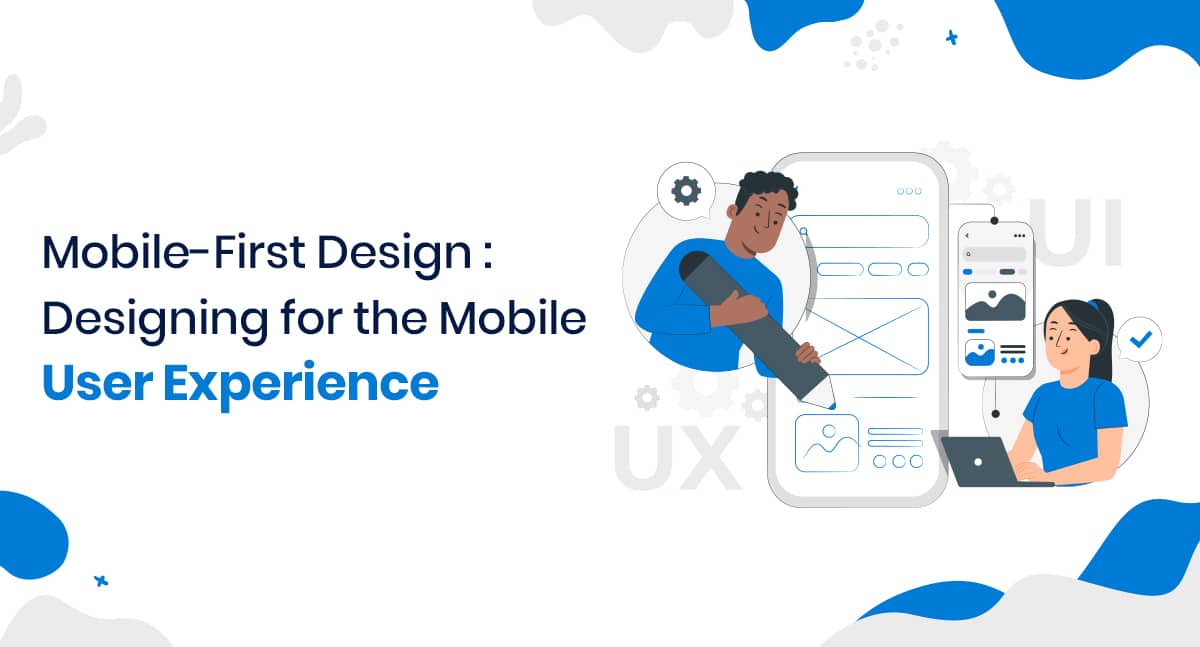Mobile-First Design: Designing for the Mobile User Experience

Mobile-First Design: Designing for the Mobile User Experience
In today's digital age, mobile devices have become an integral part of our lives. With the growing number of smartphone users, businesses must prioritize enhancing the user experience (UX) for mobile devices in their design strategies. This article delves into the significance of UI/UX design and the concept of mobile-first design. It explores how these approaches benefit business owners by creating exceptional mobile experiences. Additionally, we will discuss UI/UX design services and their role in assisting businesses to achieve this goal.
What is UI design?
User Interface (UI) design, also known as user interface design, involves designing the visual elements and interactive features of a digital product or application. Its primary goal is to optimize usability and enhance the overall user experience by effectively presenting information and functionality in a visually appealing manner.
UI designers collaborate closely with UX designers to ensure that the interface aligns seamlessly with the overall user experience strategy. This collaborative effort involves creating visually captivating interfaces that remain consistent with the brand identity and cater precisely to the target audience's needs. To achieve this, UI design incorporates a blend of creativity, thorough user research, and technical skills.
What is UX design?
UX design, which stands for user experience design, focuses on improving user satisfaction and usability of digital products or systems. It entails crafting the entire user journey, from initial interaction to ultimate goal achievement, in order to deliver a positive and meaningful experience for users.
UX design takes into account a range of factors, including the needs, goals, behaviors, and expectations of users. It goes beyond mere visual appeal and
instead aims to comprehend the motivations, context, and pain points experienced by users. By doing so, it strives to create solutions that are intuitive and user-centric.
UX designers utilize various research methodologies, including user interviews, surveys, and usability testing. These methods help them gather valuable insights and comprehend user behaviors. By leveraging this information, designers make informed decisions that ensure the product meets user expectations and effectively addresses their needs.
Understanding UI/UX Design
UI/UX design is responsible for creating visually appealing and intuitive interfaces that ensure a seamless user experience. This comprehensive field encompasses various elements like visual design, interaction design, and information architecture. When executed effectively, UI/UX design enhances user satisfaction, engagement, and conversions. The primary focus lies in understanding user behavior, needs, and preferences to craft interfaces that are easy to navigate, aesthetically pleasing, and highly functional.
The Significance of Mobile-First Design
Mobile-first design is an approach that places emphasis on designing for mobile devices ahead of considering larger screens. Given the exponential surge in mobile usage, businesses must adapt their design strategies to effectively accommodate mobile users. Mobile-first design goes beyond mere responsiveness; it involves designing with careful consideration for the limitations and unique features of mobile devices.
Also Read: 10 Things to Consider When Designing a Modern Mobile App.
Benefits of Prioritizing Mobile UX
- Improved Version: A well-designed mobile experience has the power to captivate users and drive enhanced engagement. This, in turn, leads to longer session durations, increased page views, and ultimately higher conversion rates. The mobile-first design guarantees a seamless user experience for completing transactions and conversions on their mobile devices, resulting in amplified sales and revenu
- Competing successfully: By offering an exceptional mobile experience, companies gain a competitive advantage in the market. This enables them to attract and retain more mobile users, enhancing their standing against rivals.
- Improved SEO Performance: Google gives priority to websites that are mobile-friendly when displaying search results. This means that adopting a mobile-first design approach can improve visibility on search engines and increase organic traffic.
Key Strategies for Mobile-First Design
To optimize mobile experiences, businesses should consider implementing the following strategies:
- Responsive Web Design is the practice of creating websites that can adapt to different screen sizes and resolutions, ensuring a consistent user experience across various devices. It allows users to seamlessly interact with your website regardless
- The user interface has been streamlined to enhance usability. This involves simplifying the interface by eliminating unnecessary clutter and optimizing content specifically for mobile consumption.
- To ensure fast-loading pages on mobile devices, optimizations like image compression, code minimization, and caching techniques are employed. These efforts aim to achieve faster and lighter page load times.
- Designers strive to create touch-friendly interactions that prioritize intuitiveness. They achieve this by crafting elements such as buttons, menus, and gestures specifically tailored for seamless interaction on mobile screens. The goal is to ensure effortless engagement with
- Context-Aware Content: The presentation of relevant and personalized content is tailored to the user's context, location, and preferences.
- Thumb-Friendly Navigation is a technique that aims to enhance the usability and ease of navigation for users. It involves strategically placing essential navigation elements within the reach of their thumb.
- To simplify the input process on mobile devices, one effective approach is to minimize form fields and leverage autofill capabilities. By utilizing these simplified forms and inputs, users can conveniently fill in the information with
- The mobile features are integrated by utilizing the unique capabilities of GPS, camera, and push notifications. This integration aims to enhance the user experience.
Leveraging UI/UX Design Services
UI/UX design services play a vital role in creating exceptional mobile experiences for businesses. These services bring expertise, creativity, and industry best practices to deliver designs that prioritize the user. By outsourcing UI/UX design, businesses can access specialized skills, gain fresh perspectives, and optimize their design processes. When selecting a UI/UX design partner, considering their portfolio, experience, and ability to collaborate effectively with the business team becomes crucial.
Final Thought
Mobile-first design has become an integral part of UI/UX design. It plays a crucial role in providing exceptional experiences to mobile users, giving businesses an edge in the market. By understanding the principles and strategies behind this design approach, business owners can reap its benefits—increased user engagement, conversions, and overall success. Collaborating with professional UI/UX designers ensures optimized mobile experiences through expert guidance throughout the design journey. Embracing mobile-first design not only enhances satisfaction for mobile users but also keeps businesses ahead in today's ever-evolving digital landscape. If you are looking for the best UI UX Design Solutions then get in touch with us.




